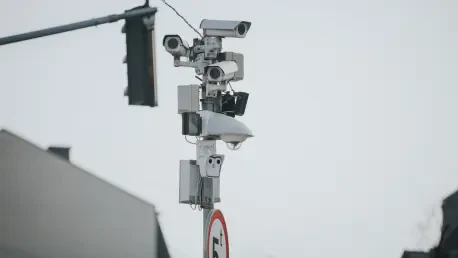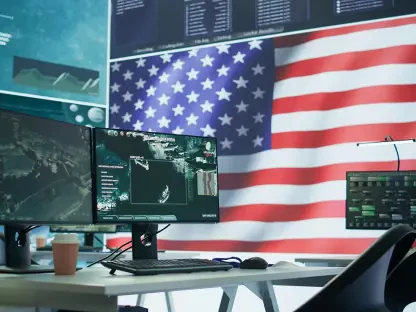Introduction
Picture a city street where every passing vehicle is silently cataloged, its license plate scanned and stored in a vast database accessible to law enforcement and private entities alike, a reality shaped by license plate recognition (LPR) technology. This tool has become ubiquitous in modern surveillance, promising enhanced security and streamlined traffic management, yet it also ignites fierce debates over privacy erosion and potential misuse. The significance of LPR lies in its transformative impact across sectors like public safety and urban planning, yet its rapid adoption raises critical questions about civil liberties. This analysis delves into current trends, real-world applications, expert perspectives, and future implications of LPR, aiming to unpack its dual role as both a protector and a potential threat in society.
The Rise of License Plate Recognition Technology
Market Growth and Adoption Trends
The market for LPR technology has witnessed remarkable expansion, driven by increasing demand for security and efficiency in various sectors. Industry reports project that the global LPR market, valued at several billion dollars today, will grow at a compound annual growth rate of over 10% from this year to 2027, fueled by advancements in artificial intelligence and camera systems. Law enforcement agencies, toll operators, and parking management firms are among the primary adopters, with thousands of systems deployed worldwide to monitor traffic and deter crime.
A notable statistic highlights that in the United States alone, millions of license plates are scanned daily, contributing to significant reductions in vehicle-related crimes in some regions. For instance, studies from urban centers indicate a drop in stolen vehicle recoveries by up to 30% where LPR is actively used. This widespread uptake, particularly in North America and Europe, underscores the technology’s perceived value, though it also amplifies concerns about data handling and oversight as adoption scales.
Real-World Implementations and Case Studies
In practical settings, LPR technology has proven its utility through targeted deployments, such as the use of Flock Safety cameras in cities like Eugene, Oregon. These systems assist local police in tracking vehicles tied to criminal activities, often aiding in swift resolutions of theft and violent crime cases. Community reports from such areas note tangible benefits, with law enforcement citing faster response times and higher case closure rates as direct outcomes of LPR integration.
However, not all implementations have been met with approval. In Eugene, public opposition to Flock Safety cameras led to vandalism and widespread outcry over privacy intrusions, culminating in the temporary deactivation of nearly 60 cameras following a city council recommendation. Residents and advocacy groups raised alarms about the lack of transparency regarding camera locations, illustrating a stark divide between public safety goals and individual rights.
This dichotomy is further evident when comparing Eugene’s experience to other Oregon cities like Springfield and Medford, which have disclosed general camera placement information to foster trust. These contrasting cases reveal how community sentiment can shape the trajectory of LPR deployments, often forcing authorities to reassess their strategies in the face of resistance.
Expert Perspectives on LPR Technology
Insights from industry stakeholders and privacy advocates paint a complex picture of LPR’s role in society. Civil rights organizations, such as the American Civil Liberties Union (ACLU), caution against the unchecked use of such surveillance tools, warning that data collected could disproportionately target vulnerable groups like immigrants or those seeking reproductive care. Their stance emphasizes the need for stringent policies to prevent misuse and ensure accountability.
On the other side, policymakers and tech representatives argue for the technology’s necessity in maintaining public safety. However, even within this camp, there are calls for balance—U.S. Senator Ron Wyden, a vocal critic of data-sharing practices, has highlighted risks of federal agencies accessing local LPR data without adequate safeguards, accusing some companies of misleading local authorities about such arrangements. His perspective underscores a critical gap in trust between technology providers and the public.
Experts across the spectrum agree that transparency remains a pivotal challenge. Privacy advocates push for mandatory disclosure of camera locations and data usage protocols, while law enforcement stresses operational security. Bridging this divide requires innovative solutions, such as public forums or independent audits, to align LPR’s benefits with the protection of civil liberties, a concern that continues to dominate discussions.
Future Implications of License Plate Recognition
Looking ahead, LPR technology is poised for significant evolution, particularly through integration with advanced AI capabilities. Such advancements could enable more precise vehicle profiling, identifying not just license plates but also driver behaviors or vehicle conditions, potentially revolutionizing crime prevention and traffic optimization in smart cities. The prospect of seamless urban monitoring holds promise for reducing congestion and enhancing emergency response times.
Yet, these innovations come with substantial risks. The erosion of privacy looms large, as expanded data collection could lead to pervasive tracking of individuals without consent, especially impacting marginalized communities already under scrutiny. Without robust oversight, there’s a danger of data exploitation by both private entities and government bodies, raising ethical questions about who controls and benefits from this information.
Regulatory developments will likely play a crucial role in shaping LPR’s trajectory. Community pushback, as seen in various locales, may drive stricter laws on data retention and access, while technological optimism could spur frameworks that prioritize both security and rights. The future of LPR hinges on whether stakeholders can navigate these tensions, crafting policies that mitigate abuse while harnessing the technology’s potential for societal good.
Conclusion and Call to Action
Reflecting on the journey of license plate recognition technology, its growth has marked a turning point in surveillance and urban management, with real-world applications showcasing both remarkable successes and profound challenges. Expert concerns have underscored the delicate balance between safety and privacy, while future outlooks point to a landscape of innovation tempered by ethical dilemmas. What stands out is the urgent need for actionable frameworks that address transparency and data protection head-on. Moving forward, governments, tech companies, and communities need to prioritize collaborative efforts in establishing clear regulations, perhaps through public-private partnerships or independent oversight bodies. Only through such united steps can the promise of LPR be realized without sacrificing the fundamental rights it risks undermining, setting a precedent for responsible technology integration in an ever-watchful world.









